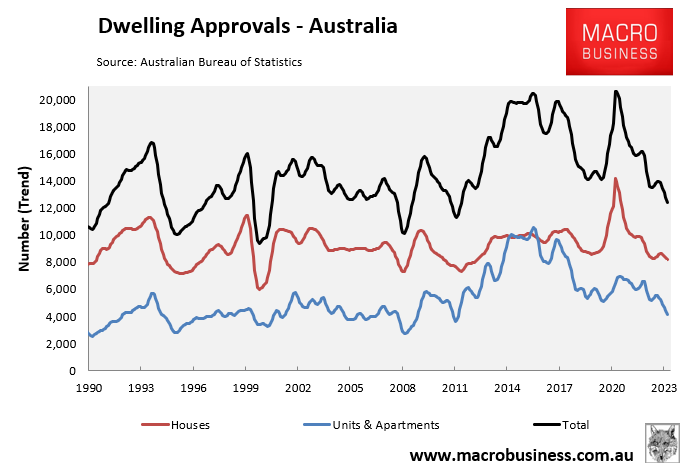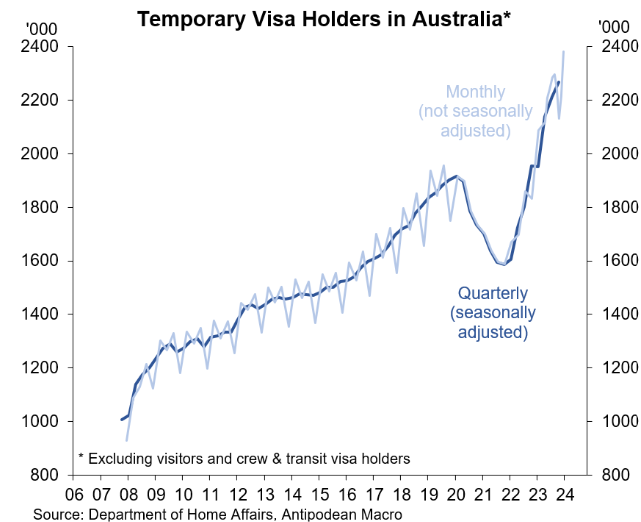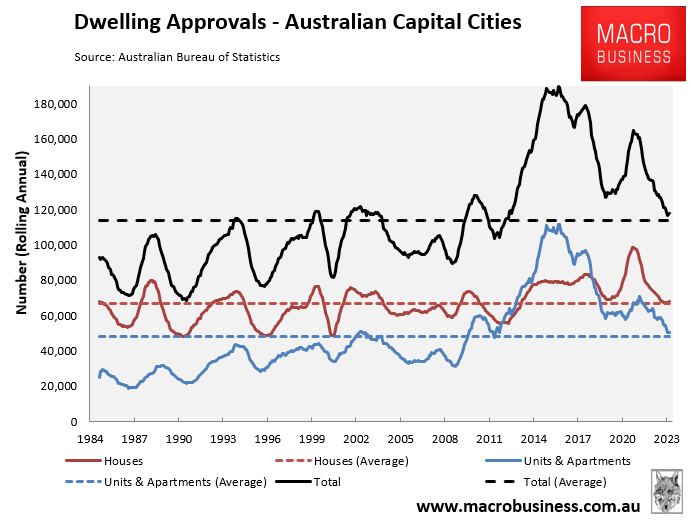Say what you will about The Kouk, but his “ghastly” assessment of the nation’s crisis is spot on:
“Building approvals are looking as sick as a dog. We’ve got a 1.9% decline in monthly dwelling approvals, compounding on earlier monthly falls”.
“We are now down 45% in the number of dwelling approvals from the 2021 peak. We are not building enough houses given demand from population growth, from the shortage that is clearly impacting on rents and prices”.
“The Reserve Bank’s interest rate hiking cycle is squeezing property developers out of constructing more dwellings”.
“In fact, if we annualise the monthly numbers, we have currently got a run rate of about 150,000 dwellings when our population is growing at around 600,000”.
“And about 15% to 20% of those dwelling approvals are replacement dwellings. So, you knock down the old place and build a new one, and you don’t actually add to the number of dwellings in the economy”.
The Albanese government’s target is to build 1.2 million homes over five years, requiring 20,000 homes to be built monthly.
However, last week’s dwelling approvals data from the ABS suggested the construction run rate will be around 40% below the government’s target, with only 12,400 homes approved for construction in February in trend terms:

It was the lowest monthly reading since April 2012.
On that run rate, Australia would only build 149,000 homes a year, 91,000 below the Albanese government’s target.
The collapse in dwelling approvals is especially problematic because it has coincided with the largest immigration and population surge in Australia’s history.
The nation’s population swelled by a record 660,000 people in the year to September 2023, driven by record net overseas migration of 549,000:

Data released last week by the Department of Home Affairs suggested that Australia’s immigration and population growth have continued to rise.
There were a record 713,144 international students in Australia as of February 2024:

The number of temporary migrants in Australia also hit a record high of 2.8 million (2.4 million excluding visitors) in February:

The latest surge in temporary migration has made a mockery of the Albanese government’s Mid-Year Economic and Fiscal Update (MYEFO) forecast that Australia’s net overseas migration would fall to 375,000 in 2023-24. It will exceed this level by a wide margin.
The situation is especially problematic for Australia’s capital cities, where only 117,500 homes were approved for construction in the year to February 2024, against a population increase of 517,200 in the 2022-23 financial year (latest available data).

The situation is worse, given that net overseas migration has accelerated since 30 June last year.
When questioned last week about the record-high temporary migration and the rental crisis, Prime Minister Anthony Albanese told ABC that Australia’s population remains smaller than the Coalition forecast in the 2019 Budget.
Albo’s reasoning is ludicrous because the pandemic completely stifled the supply side of the housing market by driving up material costs, bankrupting builders, and decreasing building capacity through months of lockdowns.

The deliberate engineering of a record immigration rebound into a supply-constrained market was insane, and it is the reason we are seeing the biggest rental crisis in living memory.
Australia’s rental crisis will intensify if the federal government maintains its historically high immigration program.

